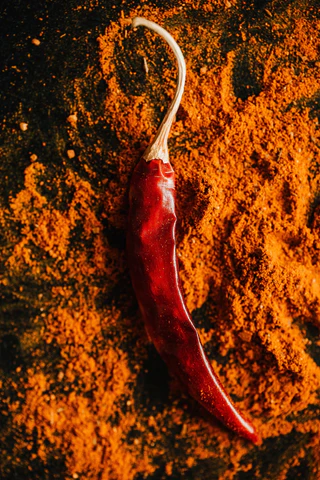- No. 268 Xianghe Street, Economic Development Zone of Xingtai city, Hebei 054001 China
- Byron@hbhongri.cn
Fiery Crimson Spice Blend for Bold Flavor Enhancements
The Fiery Allure of Hot Ground Red Pepper
Hot ground red pepper, commonly known as cayenne pepper, is a spice that adds not only heat but also a burst of flavor to dishes. Its vibrant red color and fine texture make it a staple in kitchens worldwide, from the comfort of home cooks to the elegance of professional chefs. This article will explore the origins, culinary uses, health benefits, and some tips on how to incorporate this fiery spice into your diet.
Origins and Varieties
Cayenne pepper hails from the Capsicum annuum family and is named after the city of Cayenne in French Guiana. This spice is derived from grinding dried cayenne peppers, which are typically long and slender. While there are numerous varieties of red pepper, cayenne is particularly revered for its heat level, which ranges between 30,000 to 50,000 Scoville Heat Units. This places it in the medium to high heat category, appealing to those who enjoy spicy foods.
Hot ground red pepper is not just limited to cayenne; it encompasses a range of dried red chili peppers, each with its unique flavor profile and heat intensity. From the smoky taste of chipotle to the fruity essence of Fresno peppers, there are multiple ways to infuse heat into your meals.
Culinary Uses
Incorporating hot ground red pepper into your cooking can elevate flavors and introduce an exciting kick. It is a versatile ingredient, used in various cuisines around the world. In Mexican dishes, cayenne pepper can be a crucial component in salsas, enchiladas, and chili con carne. Meanwhile, in Indian cooking, it adds heat to curries, lentil dishes, and vegetable stir-fries.
Beyond traditional uses, this spice can also enhance the flavor of everyday meals. A sprinkle of cayenne can transform a simple vegetable soup, giving it depth and warmth. Likewise, adding it to marinades for grilled chicken or seafood can create a tantalizing flavor that tantalizes taste buds. For those looking to experiment, consider adding hot ground red pepper to chocolate desserts or pumpkin pie—a small amount can create a delightful contrast with sweetness.
hot ground red pepper

Health Benefits
In addition to its culinary allure, hot ground red pepper boasts numerous health benefits. It contains capsaicin, a compound known for its anti-inflammatory properties. Capsaicin can help alleviate pain, making it popular in topical ointments for muscle and joint discomfort. Furthermore, studies suggest that it may boost metabolism and aid weight loss, as it encourages thermogenesis— the process of heat production in the body.
Cayenne pepper is also rich in vitamins A and C, promoting healthy skin and boosting the immune system. Its antimicrobial properties can help combat bacterial infections, making it a beneficial addition to your diet, especially during colder months when illnesses are more prevalent.
Tips for Incorporation
If you're new to using hot ground red pepper, start slow. A pinch can go a long way, and you can always increase the quantity to suit your taste. To maximize the flavor, consider toasting the spice briefly in a dry pan before adding it to recipes. This enhances its aroma and depth, making your dishes even more tantalizing.
Also, remember to balance the heat with other flavors. Pairing cayenne with sweet ingredients, such as honey or maple syrup, can create a well-rounded dish that excites the palate. Lastly, always be cautious—this spice packs a punch, so it’s best to add gradually and taste as you go.
Conclusion
Hot ground red pepper is a culinary powerhouse that not only livens up dishes but also offers numerous health benefits. Whether used in traditional recipes or innovative combinations, this spice can elevate any meal, making it a must-have in your spice cabinet. So, the next time you reach for that vibrant red container, remember the fiery allure and the countless culinary adventures that await.
-
Turmeric Rhizome Powder: A Golden Treasure from Roots to TableNewsJul.28,2025
-
The Versatile Application Of Crushed Red Hot Peppers: Lighting Up The Red Flames On The Dining TableNewsJul.28,2025
-
The Paprika: A Touch Of Vibrant Red In Color, Flavor, And CultureNewsJul.28,2025
-
Ground Turmeric: A Modern Examination of an Ancient SpiceNewsJul.28,2025
-
Capsicum Liquid Extract: Features, Applications, and ChallengesNewsJul.28,2025
-
Application of Capsicum Liquid Extract in FoodNewsJul.28,2025







